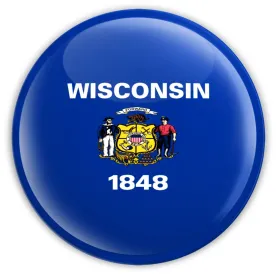Property Assessed Clean Energy (“PACE”) has been maturing into a distinct asset class over the last decade. Foley has been involved in PACE since its early days, from highlighting the three early models program developers used to raise capital and build programs to helping the City of Milwaukee build out its own to helping develop Wisconsin’s statewide PACE program PACE Wisconsin. More recently, Foley helped the Illinois Finance Authority develop and implement a statewide approach to PACE financings and refinancings that has been deployed in the City of Chicago as well as rural Illinois. Foley maintains a regular practice representing PACE capital providers, program administrators and local governments to get PACE deals done.
Before taking a look at some of the ways the market has used PACE over the last few years, here’s a synopsis of just what exactly PACE is.
PACE is real estate, construction and project financing secured by a special assessment (or special charge in some jurisdictions, such as Wisconsin) that is imposed by a local unit of government. The funds must be used for improvements that increase the building’s energy or water efficiency, or that generate renewable energy (or, in the case of California, mitigate seismic impacts). The source of funds is typically a private capital provider, though governments may also make PACE financings. In most cases, the PACE borrower repays the financing through its tax bill, though in Wisconsin and some other jurisdictions, the capital provider is permitted to arrange repayment outside of the tax collection process while the PACE financing is performing.
PACE programs typically require that the term of the financing extend to the useful life of the equipment being financed, which in the case of a new roof, boiler, or solar panels, can reach 20 years or beyond. Furthermore, the financing usually must be cash-flow positive for the borrower, meaning that the amount of utility bill savings achieved by the borrower due to the improvements must be greater than the debt service paid on the PACE financing. PACE financings are underwritten against the benefitted property, usually non-recourse to the property owner’s personal assets and transferrable to subsequent owners of the same property. Ultimately, if a PACE financing is paid in full, the PACE lien is released. Delinquent PACE financings can trigger the tax foreclosure process.
As the PACE has matured, market participants have found numerous and diverse applications for PACE financing including the following. (This post focuses on commercial PACE applications.)
-
Renovations of Historic Buildings: Property owners and developers have been increasingly utilizing PACE as a part of the capital stack for making renovations and re-purposing of historic buildings possible. These projects typically involve traditional mortgage financing, developer equity, and new market tax credit or historic preservation financing in conjunction with PACE. The PACE components of these projects can be small ($2 million of a $20 million or more renovation), but due to the cash-flow positive nature of the repayments, the PACE components are increasingly important components of such projects. The repurposing of the Mackey Building (which once played host to a grain exchange) in Milwaukee has been made possible in part by PACE.
-
Small Commercial: Individual commercial PACE financings don’t always have to be big, and indeed, many of the early commercial financings done by the Connecticut Green Bank were less than $500,000 projects. Green Bank ended up securitizing many of these financings (in a series of bonds in which this author participated).
-
Nonprofit Buildings: While real property owned by nonprofits its typically tax exempt, those owners can usually opt in to special assessments or charges, which is what the owners of the University Club in Milwaukee chose to do in order to take advantage of PACE.
-
Multifamily Residential: While the single-family residential PACE market is widely considered a wholly distinct market from commercial, multifamily residential can often times take advantage of commercial PACE financing similar to other commercial businesses. Note that not all multifamily developments supported by Federal Housing Administration insurance may be eligible for PACE financing, as the U.S. Department of Housing and Urban Development has clarified in its Administrative Guidance for Multifamily Property Assessed Clean Energy (PACE) in California.
-
Agricultural: More recently, owners of agricultural land are realizing the benefits of PACE. While agriculture may not be the first place that people think of for energy efficient buildings, farms can have significant energy loads and thus be prime for energy efficiency or renewable energy upgrades. As a case in point, a farm owner in northeastern Wisconsin utilized PACE to refinance its construction of a more than 1.8 MW ground-mounted solar facility.
-
Industrial and Manufacturing: Owners of industrial and manufacturing facilities can also benefit from PACE. Foley acted as bond counsel for the $4.5 million issuance of PACE bonds by the Illinois Finance Authority for the refinancing of a 2.6 MW ground mounted solar system in Beardstown, Illinois. This facility is also customer-owned, supplying power to a meat-processing plant. The PACE financing closed after the project was operational.
-
Hotels: As a bread-and-butter element of the PACE industry, PACE is commonly deployed by hotel owners to finance their investments in efficient electrical, heating and water improvements. Foley is commonly involved representing capital providers in financing hotel developments across the county. Recently, Foley acted as bond counsel for the $21.5 million PACE financing of the Reserve Hotel in downtown Chicago.
-
Mixed-Use: PACE can also fit in mix-use developments. The $13 million recently closed Exchange project in downtown Detroit is a perfect example, where PACE filled a key need in the capital stack. A $4 million PACE loan was also recently used to finance a mixed-use (residential and commercial) condo in southeastern Wisconsin. Because PACE is not eligible for residential property in Wisconsin, the PACE lien will be released from residential units as and when they are sold to their first buyers. PACE is being used for construction financing in both projects where Foley acted as counsel to the capital providers.
-
Hospitals: Healthcare facilities, such as the Chinese Hospital in San Francisco, have found ways to deploy PACE to support their sustainability and new infrastructure goals. Foley acted as sponsor counsel in this $36 million PACE transaction.
In addition to the evolving number of applications for PACE, the number of PACE markets is growing around the country. Thirty-four states and the District of Columbia have legislation in place that make it possible for municipalities and counties to form PACE programs. From that group, 24 states and the District of Columbia currently host active programs. Foley has experience working in many of these PACE markets, and is available to assist in PACE financings of all varieties for all participants in the PACE market.





 />i
/>i
